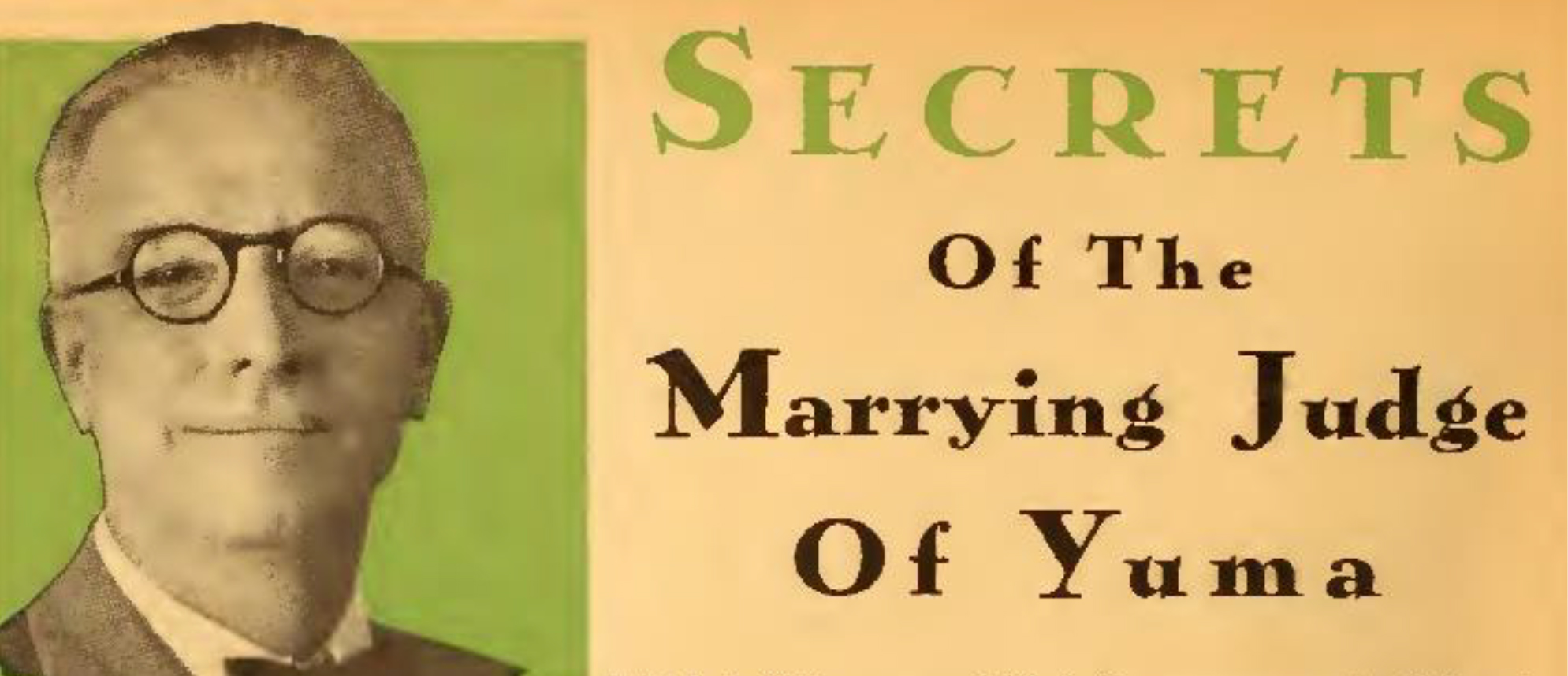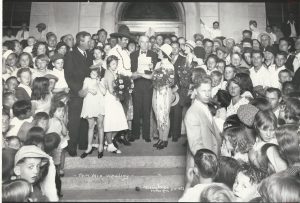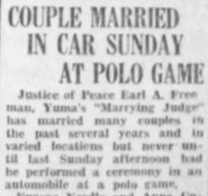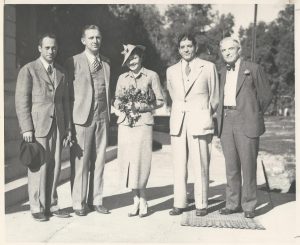In 1926 Earl Freeman, an auctioneer originally from Ohio, was elected Yuma County Justice of the Peace. Since only 274 marriages took place in Yuma County that year, Freeman would have had no inkling of how dramatically his life would be altered once a new marriage law took effect in California.
During the Prohibition era California legislators became concerned about a perceived epidemic of “gin marriages.” To prevent couples from making hasty, alcohol-impaired marital decisions, California lawmakers in 1927 enacted a three-day waiting period following the application for a California marriage license. It didn’t take long for applicants to discover the no-waiting option available at nearby Yuma, Arizona. The twin happy accidents of legislation and location combined to make Yuma a “Gretna Green” where some 300,000 marriages occurred between 1928 and 1957. For the first dozen years of this California-to-Yuma elopement outbreak, Earl Freeman was the man in the middle of Yuma’s emerging marriage industry. When he retired at the end of 1936 Freeman estimated that he had performed nearly 26,000 marriages. Hollywood stars made up a small percentage of the eloping couples, but it was the press coverage of these high-profile marriages which brought notoriety to Yuma, and especially to Earl Freeman.
Earl Freeman’s first notable celebrity marriage was that of Loretta Young and Grant Withers, who eloped to Yuma on January 26, 1930. Loretta was already a star at age 17, but she since she didn’t have parental consent to get married, her marriage was later annulled. (She lied that she was 19 on her marriage license application.) Other movie stars soon followed, including Mary Astor, Tom Mix, Errol Flynn, Claudette Colbert, Gloria Swanson, and Jean Harlow. These screen legends were all married by Earl Freeman, who was frequently described as Yuma’s “marrying judge” in movie magazines like Photoplay and The Hollywood Reporter.
When he retired, Earl Freeman noted the physical toll his justice of the peace duties had taken on his health. He not only performed marriages while on duty at the Yuma courthouse, but he was often summoned from his ranch near Somerton or awoken at his residence on Orange Avenue to marry anxious California couples. Since Yuma’s first wedding chapels didn’t appear until around 1940, Freeman had a near monopoly on Yuma’s “quickie” marriage market during his tenure as justice of the peace. Eloping to Yuma by airplane—often in the middle of the night—became something of a Hollywood craze in the early 1930s. For example, on October 15, 1933 actress Jean Harlow and cameraman Hal Rosson landed at Yuma’s Fly Field at 3:35 a.m. The airport manager promptly called court clerk Donald Wisener before driving the couple to the Wisener home to obtain a marriage license. At 4:30 a.m. the party proceeded to the Freeman residence for the marriage ceremony. The newlyweds enjoyed a Yuma breakfast and then departed for Hollywood at 6:30 a.m.
And it wasn’t just celebrities who disrupted the off hours relaxation of Earl Freeman and Yuma’s other wedding officials. On Sunday January 9, 1934 Freeman was enjoying a local polo match—yes, Yuma once had a thriving polo scene—when a California couple “hunted him down” to be married in their car at the polo field.
Details of Earl Freeman’s personal life are somewhat sketchy, but in January 1934 the 54-year-old Freeman married Vesie Homesley, age 27. Freeman’s first wife Katherine had died a year earlier. Freeman eventually earned a law degree, and in 1940 he again ran for justice of the peace, losing to R.H. Lutes.
In 1942 it was reported that Earl Freeman was working as a mechanic at an aircraft plant in San Diego which built Consair fighter planes. In 1948 the “marrying judge” died at age 69 in San Diego and was buried next to his first wife’s grave in Somerton. His obituary made no mention of second wife, Vesie.
Earl Freeman was the central figure in the first chapter of Yuma’s no-waiting wedding story, but he was soon followed by other enterprising and competitive individuals such as Ed Winn, R.H. Lutes, Ersel Byrd, Rev. James Coleman, and Judge Henry Kelly. Each of these men married thousands of California couples while playing major roles in Yuma’s colorful “wedding chapel era” which abruptly ended when Arizona’s marriage laws changed in 1956 . . .
By Jim Patrick, Special Services Librarian
To learn more about Yuma’s golden age as a marriage destination, please attend one of Jim’s upcoming “Married in Yuma” presentations:
Wed. Jan. 25, 2023 10:00 a.m. — Main Library
Wed. Feb. 1, 2023 10:30 a.m. — Heritage Library
Wed. Feb. 8, 2023 10:30 a.m. — Foothills Library
Wed. Feb. 15, 2023 10:30 a.m. — Wellton Library







Add a comment to: Earl Freeman, the “Marrying Judge of Yuma”